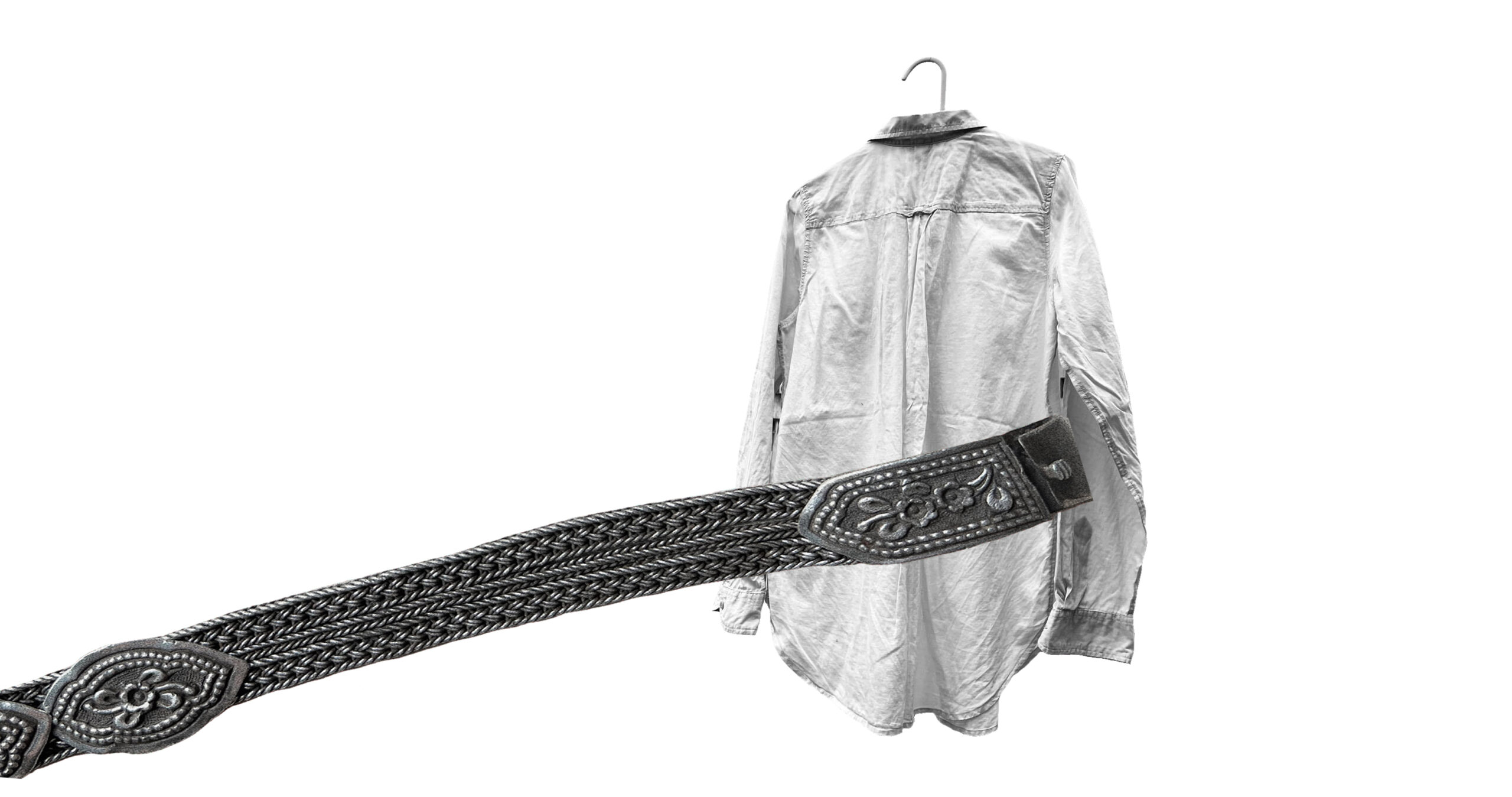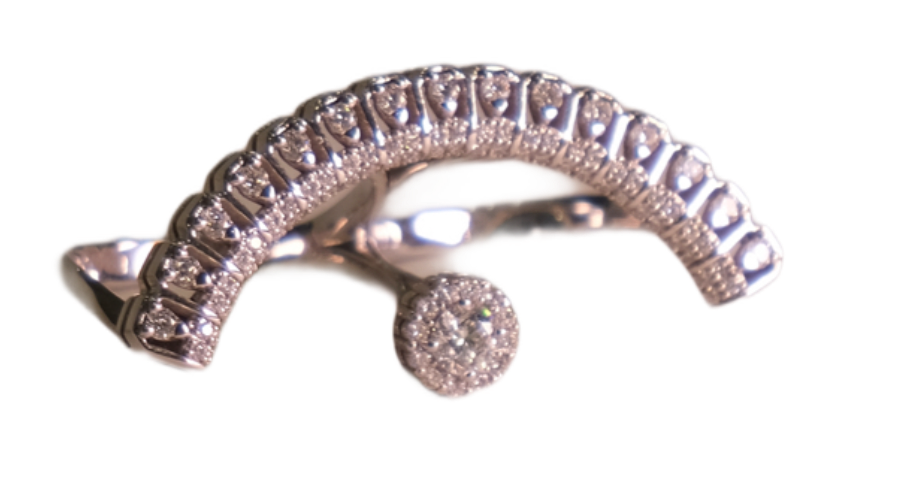
Stepping into Yerevan’s Vernissage market feels like entering a vibrant realm of Armenian craftsmanship, a rich display of ornamental carpets, silverware and jewelry, each piece claiming authenticity. Yet amid the vast array of designs, distinguishing the original from a copy is not for the weak-hearted.
Jewelry, once revered as a talisman against the evil eye and a symbol of status and societal standing, has evolved into a powerful fashion statement. Even today, the demand for ethnic jewelry remains robust globally. Armenian ethnic jewelry remains popular, worn both locally and occasionally featured in international publications like Elle and L’Officiel.
Interest in Armenian ethnic jewelry gained significant traction after singer Sirusho wore jewelry from the Lusik Aguletsi Museum in her 2011 music video, “PreGomesh.” From pop music to pop culture, Armenian jewelry can be seen everywhere. For those wanting to learn more about the origins of authentic ethnic Armenian jewelry, the Metsamor Historical-Archeological Museum-Reserve and the Lusik Aguletsi Museum are the right places to visit.
Tracing the origins of Armenian jewelry reveals a rich history of metalworking and carving, with early artisans mastering techniques that have endured for millennia and become integral to Armenian culture and identity. The Metsamor Historical-Archeological Museum-Reserve offers a fascinating look at the evolution of Armenian jewelry, showcasing the tools and techniques used by ancient artisans. The museum’s newly renovated basement is a treasure trove of golden jewelry, while the upper floors feature an extensive collection of artifacts, including pottery, ceremonial weapons, and tools. Some of these bear symbols such as the swastika—a representation of infinity in perpetual motion—that reflect the deep cultural and symbolic artistry of the era.
Another intriguing exhibit includes stone-carved phalluses displayed in front of the museum, historically used as jewelry motifs and believed to bring marital blessings upon those who danced around them. While these symbols may be considered controversial today, they reflect the intricate and often misunderstood iconography that has shaped Armenian culture for centuries. The preservation of such motifs, despite societal taboos, underscores the importance of authenticity in ethnic jewelry.
Lusik Aguletsi was a passionate collector of Armenian jewelry and other cultural artifacts. The museum established in her name is a treasure trove of Armenian culture. Aguletsi dedicated her life to preserving authentic Armenian jewelry. Her collection contains not only beautifully designed and hand-carved belts from various regions of historic Armenia but also showcases talismans, rings, and necklaces that reflect the roots of Armenian culture.
Her daughter, Astghik Samvelyan, now curates the museum and has established a silver jewelry brand that reinterprets traditional designs for modern wearers. Through her brand, Aguletsi, Astghik preserves Armenian ornaments as they are, while giving them new life. Astghik’s style—fusing modern-day taraz (traditional Armenian attire) with her tattoos of Armenian ornaments—epitomizes the contemporary Armenian woman who honors her heritage while embracing current trends.

Visitors to the museum experience an intimate, tactile connection to Armenian history, as they are encouraged to touch the pieces and feel the weight of cultural legacy in their hands. This is a must-visit destination for anyone seeking to discover the authentic roots of Armenian jewelry.
Astghik’s approach to Armenian ethnic jewelry reflects a deep commitment to preserving traditional symbols, even those considered taboo, such as phallic motifs, which were considered a symbol of rebirth and fertility. Her designs boldly incorporate these motifs, offering a nuanced exploration of Armenian identity that is both rooted in the past and resonant with contemporary sensibilities. This philosophy is central to her brand where she reimagines ancient motifs to create pieces that are wearable and meaningful today. Aguletsi is an authentic brand that preserves Armenian heritage and maintains the soul of the past.
Continuing her mother’s legacy, Astghik maintains a rich collection of Armenian ethnic jewelry. Just like the original pieces, Aguletsi’s collection features symbols like eagles, dragons, frogs, birds, and phalluses, each with distinct meanings. Belts, for example, symbolize the connection between men and women and serve as talismans for fertility.
When guiding visitors through the museum, Astghik explains each symbol’s iconography and demonstrates how these symbols were used in Armenian culture. For instance, animal icons in Armenian culture were minimalistic, and each carried a specific meaning. Frogs on ancient brands were symbols of fertility, much like phalluses used in belt ornaments, which symbolized the interconnection of men and women and the beginning of life. Today, these symbols are reinterpreted in the form of rings, serving as metaphors for the bond between men and women.
Astghik has chosen to embrace all elements of Armenian ethnic jewelry. Even in her merchandising, she incorporates stones carved into phallic shapes, crafted in the traditional style of the Metsamor Museum-Reserve.Through her work, Astghik Samvelyan demonstrates that Armenian ethnic jewelry is not about preserving static representations but rather about evolving interpretations of historical trends and ornaments. Her brand exemplifies the idea that these pieces can adapt to modern tastes while retaining their deep cultural and symbolic significance.

Another authentic brand in the Armenian jewelry landscape is the brand Emil Grigorian, which has remained true to Armenian traditions while adapting to modern tastes. Founded in 1950 as the Yerevan Jewelry Plant and later on known as Gnomon—a reference to the sundial—the brand was the first jewelry company in Armenia. Over time, it evolved but remained committed to preserving Armenian ornaments without alteration. Their collections, such as Mush and Ani, draw inspiration from Western Armenian church motifs, and their Trchnatar (medieval Armenian calligraphy art of the Armenian alphabet illustrated as birds) collection, blessed by Catholicos Vazgen I in 1988, has become a hallmark of authentic Armenian craftsmanship. Unfortunately, the brand’s success has led to a proliferation of imitations, a challenge faced by many authentic Armenian brands. The Trchnatar collection, in particular, has been widely replicated, often without acknowledgment of its origins, diluting the significance of the original designs.


Pregomesh is another brand inspired by Armenia’s rich cultural heritage, yet with its own distinct approach. Pregomesh creates pieces linked to Armenian culture but designs them to be simpler and more suitable for younger wearers. While the brand began with Armenian ornaments, its current design choices focus on creating pieces that are modern and trendy for today’s customer. Their silver jewelry demonstrates the influence of Armenian culture rather than direct references.

The rise of brands like Aguletsi, Emil Grigorian, and Pregomesh, which skillfully fuse traditional Armenian motifs with contemporary design, marks a promising evolution in the jewelry industry. These brands honor the cultural heritage that inspires them, balancing authenticity with innovation. However, as this trend grows, it becomes essential to maintain a clear connection to genuine Armenian jewelry iconography and safeguard the meanings behind these designs—meanings that can sometimes be diluted or overlooked by certain brands.
Armenian ethnic jewelry is undeniably captivating, especially when reinterpreted with a modern touch. However, the replication and alteration of designs threaten to erode the cultural significance of these pieces. It is crucial to encourage the preservation of authentic Armenian motifs while embracing the creative evolution of this timeless art form. As Armenian jewelry continues to evolve, the industry must remain mindful of preserving the cultural heritage that makes these pieces so unique and meaningful.
Issue N2
Design & Recycling







